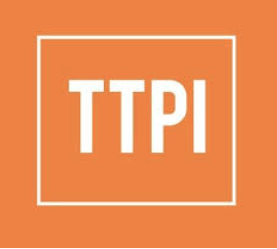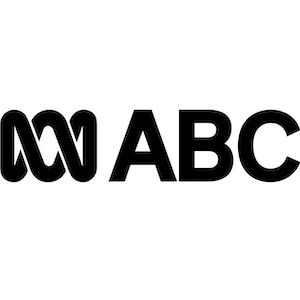By Helen Christensen and Bligh Grant
Australian governments of all levels are increasingly familiar with two trends in public budgeting. Firstly, the pressure to deliver ‘more with less’ in public budgets; secondly, an increased realisation by communities that they have a democratic right to participate in public policy decisions. In local government, processes of participatory budgeting (PB) are emerging, designed to assist meeting the challenge of these trends.
Simply defined, PB is a process in which the community can contribute to decision-making over part, or all, of a government budget. Somewhat famously now, the first PB process was run in Porto Alegre, Brazil in 1989. It was designed as an element of democratisation in a country that was emerging from a period of authoritarian rule. The Porto Alegre PB processes ran for over a year and involved local direct voting, neighbourhood meetings and regional assemblies where the budget was decided and where representatives conducted vigorous oversight of spending to ensure that practices favouring specific groups did not return.
The practice spread throughout South America, propelled by visible improvements in social justice, wealth redistribution and social wellbeing. These were evident in decisions by communities to improve basic community infrastructure such as sanitation and paving. By the mid-2000s, PB was proliferating through the developing world, led by international lenders such as the World Bank and United Nations Development Program. These organisations made PB a condition of their loans as a means of promoting good governance.
The more recent wave of PB processes has seen it gain a foothold in the cities of established Western democracies in Europe, North America and now Australia. In these countries, the practice is billed as addressing the ‘wicked problem’ of how to involve communities that are equally distrustful and demanding in the face of declining sub-national budgets.
Australia has come relatively late to PB, with the first documented process occurring in 2012. While Australian practice has shown some similarities with those conducted in other Western democracies, there is still wide variation in practice, with local governments grappling with how to adapt the practice to best suit their needs.
Our paper examines six Australian local government PB processes in some detail. A summary is provided below.
As the table shows, variation exists in the following:
[i] which part of the council’s budget is available to the community for decision-making ($100,000 in the City of Melville, WA; $5.9 billion over 10 years in the City of Melbourne);
[ii] the time of the budget outlay (1 to 10 years);
[iii] the proportion of the total budget; and
[iv] the key methods used in the engagement with the community (workshops, community panels, citizens’ juries).
While these disparities make individual PBs difficult to compare precisely, it also raises a number of questions that will need to be addressed as the practice continues to be adapted to the Australian local government context.
What is the role of deliberative practices in Australian PBs?
Examining the tabular summary in more detail, five of the six processes have attempted to ensure the authenticity of deliberative processes by randomly selecting participants to ensure they represent a microcosm of the wider community. Deliberative processes are designed to allow space and time for participants to test assumptions, question sources, set criteria, deliberate and form consensus and given the complexity of the work and spending of local government, this deliberative atmosphere is convivial in assessing what can at times be politically controversial decisions.
Interestingly, deliberative methods were not a key feature of the early PBs in South America, with a direct vote used instead. Deliberation is, however, fast becoming a dominant feature of PBs in established democracies. While this is an exciting development, a drawback is that deliberative processes are more resource-intensive than, say, direct voting and the random selection of a representative group can be criticised as exclusionary.
What is required of organisations and leaders to facilitate PB?
Like other participatory processes, PB requires a fair amount of resourcing in terms of time, money and skills; more-so for deliberative processes. Additionally, PB requires that the organisation and its leaders understand PB, how to support it and what the consequences of community involvement are. Government organisations are, by their very nature, risk-averse and consequently may lack the ‘organisational readiness’ to commit to such processes.
Is PB is a sustainable practice in Australia?
With PB now having been practiced globally for over 25 years, researchers are able to identify markers for its success. One of the most concerning trends is that the processes do not stand the test of time, with many being one-off or disappearing after a short time, often as a result of political change. Of the six Australian processes summarised in our table, only one (Melville) has committed to a subsequent process. It may be the realisation of the resource-intensive nature of deliberative practices has seen a decline in political will, and realisation of this might hinder the take-up of PB by other local governments.
How might PB impact the roles and responsibilities of local and state governments?
In half of the PB processes studied, recommendations were made by the community that had a direct bearing on legislative powers outside of local government. These included recommendations about transport infrastructure, planning legislation, provision of schools and community services. In response to these requests, local governments have offered to adopt an advocacy role, yet there is a risk that participants may think that the state government ought to be more responsive.
Of particular interest are the cases of Canada Bay and Melbourne, where both groups recommended a rate increase; in the case of Melbourne, this was in direct contradiction to the-newly introduced policy of rate-capping. This development highlights a further risk, namely that deliberative PB processes may be used by councils to introduce rate increases which have historically been a point of contention between state and local governments.
Over and above this controversy, there is no doubt that PB is an exciting development, not only in the democratic practices of local government but also as a means to collaboratively tackle problems of public spending in an environment characterised by both austerity and scrutiny.
A number of PBs are currently underway or planned in local governments across Australia and if previous practice is any indication, further adaptations can be expected. Nevertheless, regardless of the shape, or shapes, PBs in Australia take, their ability to involve the public in addressing the difficult problem of public spending make them more likely to be accepted by the greater public. As such, PB as an element of local government practice in Australia is likely to continue to increase.
CITATION :
Christensen, Helen & Grant, Bligh, (2017), Participatory Budgeting: The Next ‘Big Thing’ in Australian Local Government?, Austaxpolicy: Tax and Transfer Policy Blog, 2 February 2017, Available from: http://www.austaxpolicy.com/participatory-budgeting-next-big-thing-australian-local-government/
ABOUT THE AUTHOR
Helen Christensen
Helen Christensen is an Associate and a PhD Candidate at the Institute of Public Policy and Governance, University of Technology Sydney. Her research is in the professionalisation of community engagement in local government.
Bligh-Grant
Bligh Grant is Senior Lecturer at the UTS Centre for Local Government (CLG). He holds a PhD and BA (Hons, Politics) from the University of New England.
Austaxpolicy, the blog of the Tax and Transfer Policy Institute at the Crawford School of Public Policy, The ANU.




